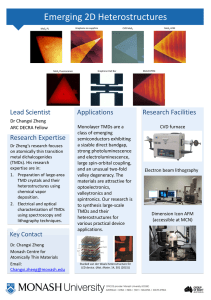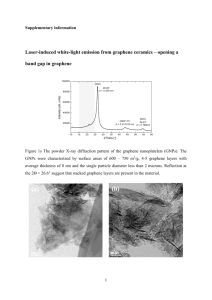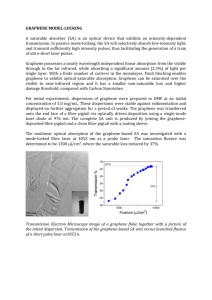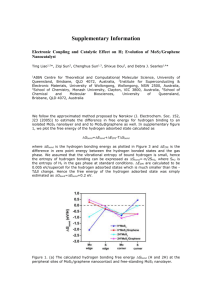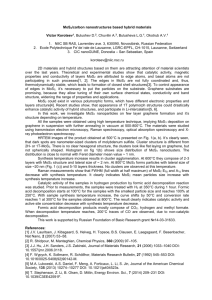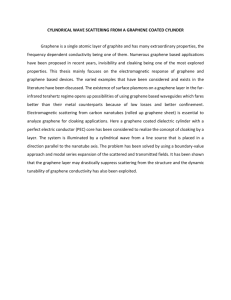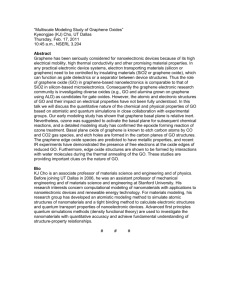Graphene–MoS2 hybrid structures for multifunctional
advertisement
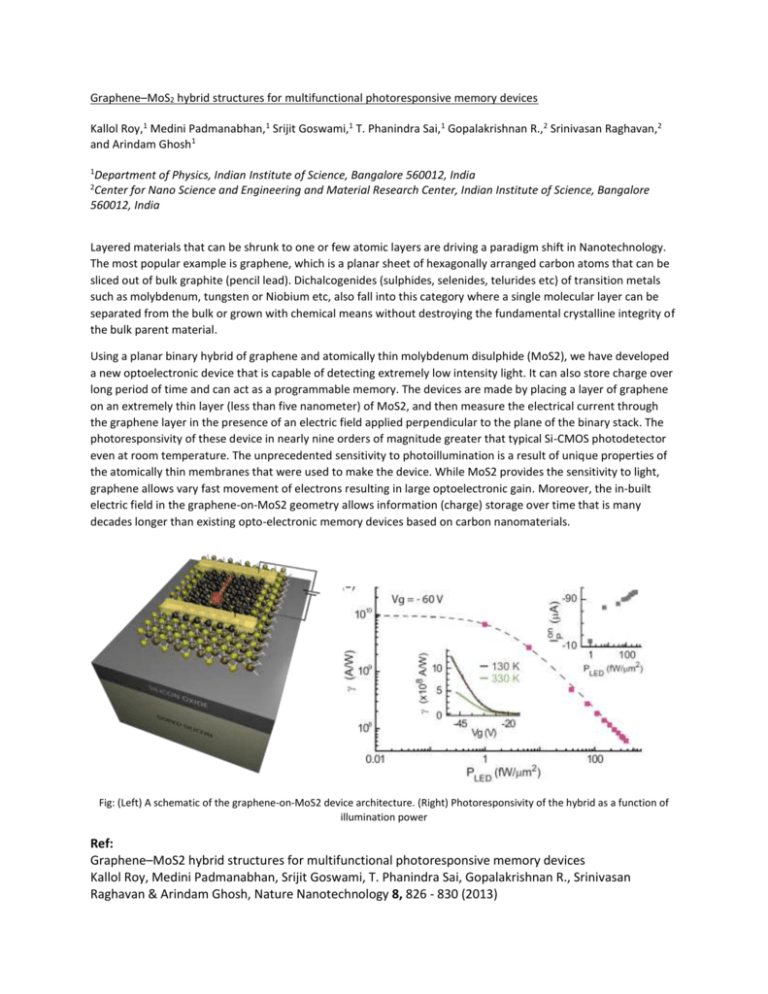
Graphene–MoS2 hybrid structures for multifunctional photoresponsive memory devices Kallol Roy,1 Medini Padmanabhan,1 Srijit Goswami,1 T. Phanindra Sai,1 Gopalakrishnan R.,2 Srinivasan Raghavan,2 and Arindam Ghosh1 1 Department of Physics, Indian Institute of Science, Bangalore 560012, India Center for Nano Science and Engineering and Material Research Center, Indian Institute of Science, Bangalore 560012, India 2 Layered materials that can be shrunk to one or few atomic layers are driving a paradigm shift in Nanotechnology. The most popular example is graphene, which is a planar sheet of hexagonally arranged carbon atoms that can be sliced out of bulk graphite (pencil lead). Dichalcogenides (sulphides, selenides, telurides etc) of transition metals such as molybdenum, tungsten or Niobium etc, also fall into this category where a single molecular layer can be separated from the bulk or grown with chemical means without destroying the fundamental crystalline integrity of the bulk parent material. Using a planar binary hybrid of graphene and atomically thin molybdenum disulphide (MoS2), we have developed a new optoelectronic device that is capable of detecting extremely low intensity light. It can also store charge over long period of time and can act as a programmable memory. The devices are made by placing a layer of graphene on an extremely thin layer (less than five nanometer) of MoS2, and then measure the electrical current through the graphene layer in the presence of an electric field applied perpendicular to the plane of the binary stack. The photoresponsivity of these device in nearly nine orders of magnitude greater that typical Si-CMOS photodetector even at room temperature. The unprecedented sensitivity to photoillumination is a result of unique properties of the atomically thin membranes that were used to make the device. While MoS2 provides the sensitivity to light, graphene allows vary fast movement of electrons resulting in large optoelectronic gain. Moreover, the in-built electric field in the graphene-on-MoS2 geometry allows information (charge) storage over time that is many decades longer than existing opto-electronic memory devices based on carbon nanomaterials. Fig: (Left) A schematic of the graphene-on-MoS2 device architecture. (Right) Photoresponsivity of the hybrid as a function of illumination power Ref: Graphene–MoS2 hybrid structures for multifunctional photoresponsive memory devices Kallol Roy, Medini Padmanabhan, Srijit Goswami, T. Phanindra Sai, Gopalakrishnan R., Srinivasan Raghavan & Arindam Ghosh, Nature Nanotechnology 8, 826 - 830 (2013)

